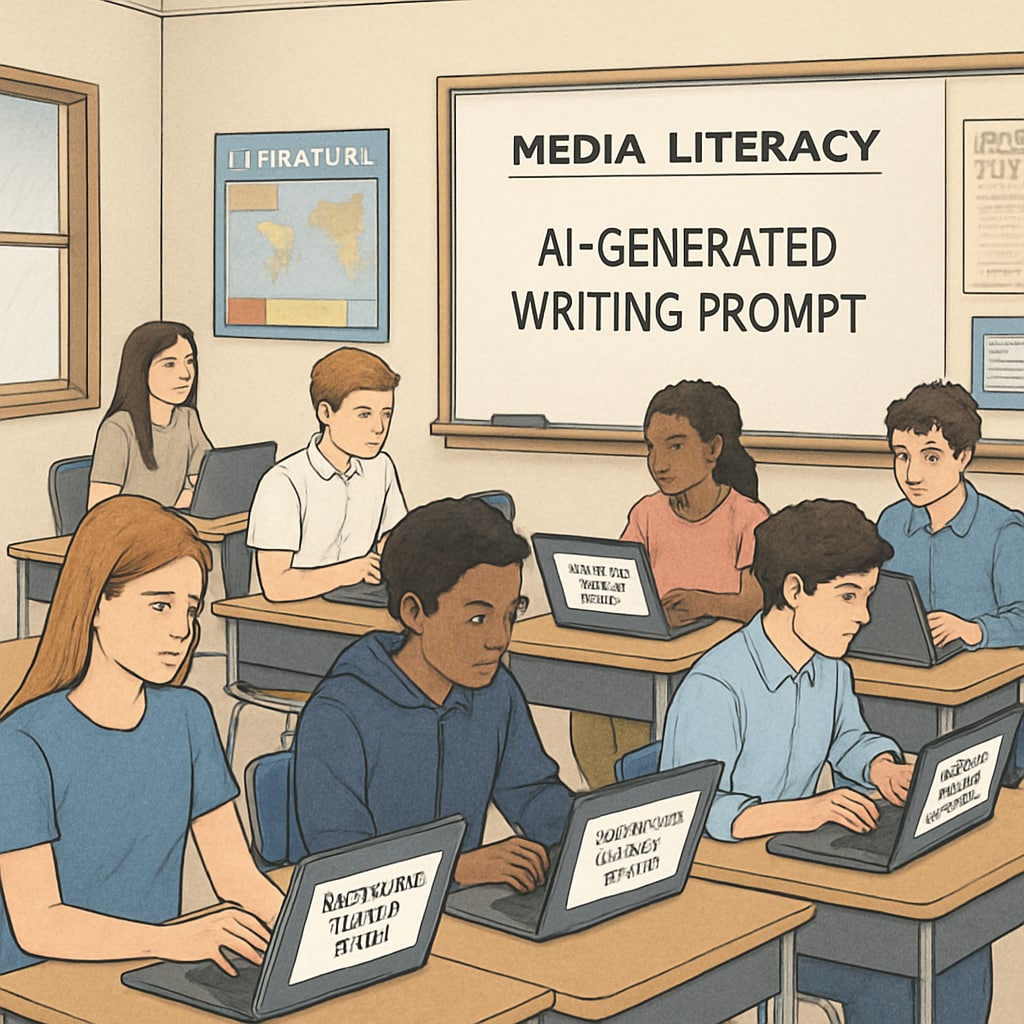In today’s digital era, media literacy and critical thinking have become essential skills for students to navigate the overwhelming flow of information. Integrating AI writing prompts, media literacy, and teaching resources into classroom activities can help educators equip students in grades 9-12 with the tools they need to evaluate, analyze, and create media content effectively. This article explores how AI tools can enhance these competencies while highlighting a free, role-based AI prompt package that educators can use to foster innovative learning experiences.
Why Media Literacy and Critical Thinking Are Essential
Media literacy refers to the ability to access, analyze, evaluate, and create media in various forms, ranging from traditional newspapers to digital platforms. In addition, critical thinking—the ability to question assumptions, form reasoned arguments, and make informed decisions—is a fundamental skill that enables students to navigate the complexities of the modern world.
However, teaching these skills effectively can be challenging. Students are often exposed to misinformation, biased narratives, and manipulative content online. As a result, educators must adopt innovative teaching strategies to help students critically engage with media content. AI-powered tools offer one such solution.
How AI Tools Enhance Learning
AI tools can revolutionize the way students learn by providing dynamic and interactive experiences tailored to their needs. Specifically, AI writing prompts can:
- Encourage critical analysis: AI can prompt students to evaluate the credibility of a news article or identify biases in a media piece.
- Facilitate creative thinking: Role-based prompts allow students to write from different perspectives, such as a journalist, scientist, or policymaker.
- Personalize learning: AI can adapt prompts to match a student’s skill level, ensuring an appropriate level of challenge.
- Save time for educators: Pre-designed AI prompts reduce the workload for teachers while maintaining a high-quality learning experience.
For example, educators can use AI to generate hypothetical scenarios or debates, encouraging students to explore multiple viewpoints critically. This method not only improves engagement but also deepens understanding of complex topics.

Implementing AI Writing Prompts in the Classroom
To effectively integrate AI writing prompts into the curriculum, educators can follow these steps:
- Identify learning objectives: Clearly define what you want students to achieve, such as analyzing media bias or crafting persuasive arguments.
- Select appropriate tools: Choose AI platforms that are user-friendly and provide customizable prompts. Tools like ChatGPT or WriteSonic can be particularly useful.
- Incorporate real-world scenarios: Use current events or trending topics to make the exercises relevant and engaging.
- Encourage collaboration: Pair students for group discussions or debates based on their AI-generated content, fostering teamwork and diverse perspectives.
- Provide feedback: Use rubrics to assess students’ work and guide them toward improvement.
Additionally, educators can access free, role-based AI writing prompts designed specifically for high school students. These prompts simulate real-world challenges, such as drafting a public service announcement or writing an investigative report, helping students apply their critical thinking skills in practical contexts.

Challenges and Ethical Considerations
While AI tools offer numerous benefits, their use in education comes with challenges. For instance:
- Data privacy: Some AI platforms require personal data, raising concerns about student privacy.
- Over-reliance on technology: Students might depend too heavily on AI, potentially limiting their independent critical thinking abilities.
- Bias in AI algorithms: AI systems can inadvertently reflect biases present in their training data, which may influence students’ learning outcomes.
To address these issues, teachers should combine AI tools with human-led discussions and emphasize ethical considerations in media literacy. For instance, students can analyze how AI-generated content compares to human-written content, highlighting potential biases or inaccuracies in both.
The Future of Media Literacy Education
As AI technology continues to evolve, its role in education will grow increasingly significant. By using AI writing prompts and tailored teaching resources, educators can transform media literacy education, making it more interactive, relevant, and effective. This approach not only prepares students for the digital world but also inspires them to become critical thinkers and responsible media creators.
Ultimately, the integration of AI into education is not about replacing traditional teaching methods but enhancing them. By leveraging AI tools thoughtfully, educators can empower students to navigate the complexities of modern media with confidence and insight.
Readability guidance: The article includes short paragraphs, bulleted lists, and a clear structure to enhance readability. Active voice and transition words are used throughout to maintain flow. Ethical considerations and practical steps ensure a balanced perspective.


